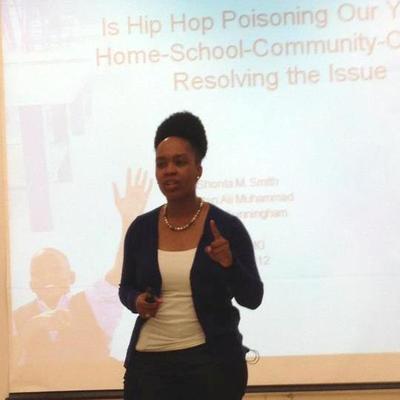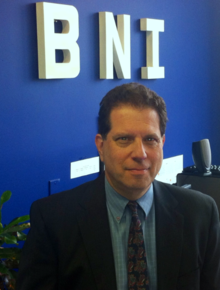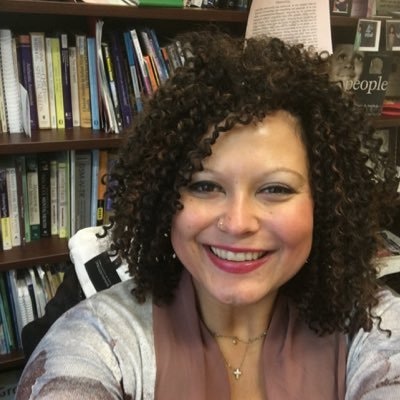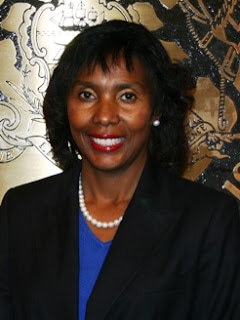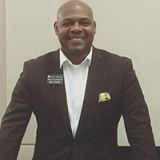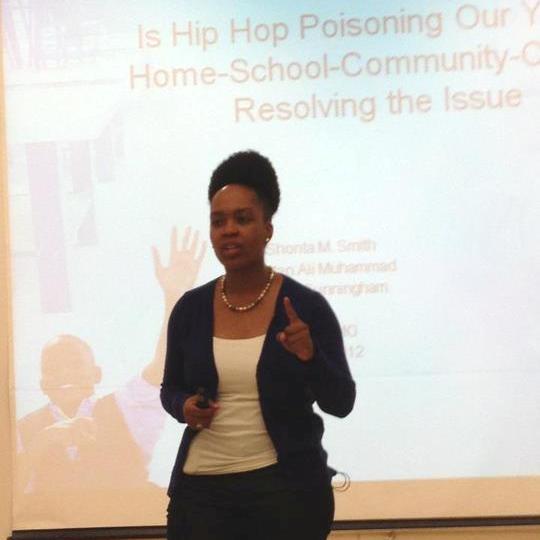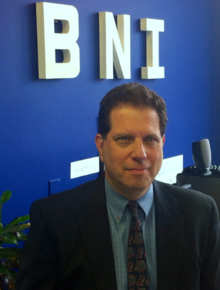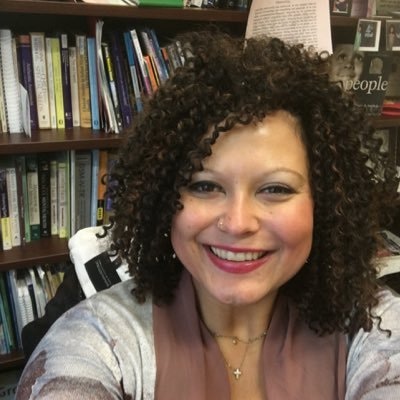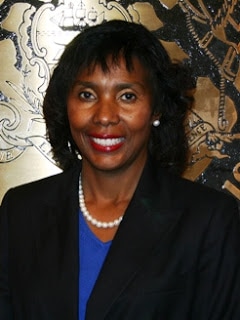6 Scholars 6 Questions
Forest Of The Rain Productions asked six well respected scholars, researchers, and higher education professionals to share their perspectives on the issues of education, fair housing, parental/family engagement, academic research, the business of education and civic involvement. We asked each a different question. Their responses are informative and insightful.
Dr. Shonta SmithWhat are the benefits of ensuring ever child regardless of their race or social economic status receives a quality education which is grounded in academic rigor and prepares them to compete globally?
Every child has a right to a quality education. An education is a basic human necessity. This necessity provides each of us with the opportunity to think for ourselves. The key is thinking. When you have the ability to think no one can alter what you know is right. No one can alter what you now is real. In a world of fake news being educated is vital. Where would we be as society if it were not for an education? An educated society benefits everyone. When you know better, it is your responsibility to do better, and we are better off as a nation with all of our citizens being educated.
The question we need to ask ourselves is why wouldn’t we educate all children? If we choose to educate some and not others we are destined to fail. Failure should not be an option. The success of a nation begins and ends with the growth and development of children. A country that fails children fails themselves. You are only as strong as your greatest weakness. When you look at this great nation that we call America what is our greatest weakness? How we treat each other matters. If I inflict harm on you eventually, you will inflict harm on me. However, if we work together to do what is in the best interest of everyone we all profit. Providing our children with a holistic rigorous academic education affords them with options. Rarely do uneducated folk have options. Uneducated folk receive leftovers, and if the leftovers have no nutritional value, the likelihood of one being successful is slim. All children have a right to a quality education. A quality education furthers the child’s potential, enriches mindset and enhances probability of prosperity.Every child has a right to a quality education. An education is a basic human necessity. This necessity provides each of us with the opportunity to think for ourselves. The key is thinking. When you have the ability to think no one can alter what you know is right. No one can alter what you now is real. In a world of fake news being educated is vital. Where would we be as a society if it were not for an education? An educated society benefits everyone. When you know better, it is your responsibility to do better, and we are better off as a nation with all of our citizens being educated. The question we need to ask ourselves is why wouldn’t we educate all children? If we choose to educate some and not others we are destined to fail. Failure should not be an option. The success of a nation begins and ends with the growth and development of children. A country that fails children fails themselves. You are only as strong as your greatest weakness. When you look at this great nation that we call America what is our greatest weakness? How we treat each other matters. If I inflict harm on you eventually, you will inflict harm on me. However, if we work together to do what is in the best interest of everyone we all profit. Providing our children with a holistic rigorous academic education affords them with options. Rarely do uneducated folk have options. Uneducated folk receive leftovers, and if the leftovers have no nutritional value, the likelihood of one being successful is slim. All children have a right to a quality education. A quality education furthers the child’s potential, enriches mindset and enhances the probability of prosperity.
|
Robert Strupp, Esq.What can grassroots’ organization do to protect the legacy and importance of fair housing given today’s political climate?
Any discussion of the legacy of civil rights and fair housing in today's political climate must begin with a review of the earliest days of our nation.America has a long history of treating people differently based on race, national origin, gender and more. In its first century, America went to war with itself to, at least conceptually, prohibit slavery, end segregation and require that all citizens of the United States enjoy the same protections and rights guaranteed by the Constitution, regardless of race. Although full freedom for African Americans would not be realized ( at least on paper) until the 1960s, in the 1860s the Constitution was amended to eliminate discrimination that had been permitted. The Thirteenth Amendment (1865) officially abolished slavery, the Fourteenth (1868) granted citizenship, and the Fifteenth (1870) established the right to vote.
Following these post-Civil War laws and Constitutional amendments, the United States remained a country of discrimination and segregation. In the first half of the 20th century, laws were passed by local governments to keep people in their place and restricting property ownership based on race, religion and national origin. Those who harbored bigoted sentiments dug in their heels and resisted demands for equal treatment under the law. Ultimately, demand for integration and equality were buoyed by Supreme Court decisions rejecting such concepts as "separate but equal" and the Civil Rights initiatives of the 60's were instrumental in breaking down these laws of segregation. Martin Luther King Jr. and those who joined and followed him are examples of grassroots leaders dedicated to breaking barriers and establishing an acceptance of diversity and integration. Today, government policies and business practices that negatively impact the rights of the LGBT population, people of certain nationalities, rights of women and more, are being challenged by the "resistance" movement. Clearly, this is an "heir" to the grassroots efforts and legacy of the civil rights movement that grew strong in the 50's and 60's. One grassroots opportunity involves the Fair Housing Act principal of Affirmatively Furthering Fair Housing, initially established by the Act and recently advanced by the Obama administration. With over 14 million people – including over 4 million children – living in communities of concentrated poverty, the Affirmatively Furthering Fair Housing rule (AFFH), is designed to eradicate growing poverty and inequality. Under AFFH, state, public housing authority, and jurisdictional leaders receive support from the United States Department of Housing and Urban Development (HUD) towards creating diversity in housing, health, transportation, education, environmental and economic development. To be successful, this process anticipates input from the community and faith-based groups and individuals. This undertaking has a goal of transforming disinvested, high-poverty neighborhoods and providing the opportunity for all who choose, to move into accessible, affordable housing in high-opportunity neighborhoods. A process, known as the Assessment of Fair Housing, offers guidance, data and mapping resources, and technical assistance to help identify and overcome persistent challenges related to disparities in opportunity and fair housing choice. In 2017, grassroots responses to discrimination include the recent resistance to anti-woman rhetoric, nationalism and anti-middle east policies and sentiments, the persistent challenges to the rights of the LGBTQ communities and more. Today, the issues facing fair housing include, but go beyond race. America continues to confront prejudice in housing based on race, color, national origin, religion, gender, disability and familial status (federally protected classes under the Fair Housing Act), but additionally, landlords and other housing providers discriminate against housing consumers based on a host of reasons; including gender identity, source of income (retirement benefits, housing assistance vouchers) and more. It remains up to all Americans to resist and fight discrimination to finally establish sustainable and diverse communities where everyone has the opportunity to live and coexist together.
|
Dr. Avis WilliamsTo what extent if any can a robust parental/family engagement program help create a high-performing school culture capable of reducing behavioral issues?
What is the most important ingredient in an oatmeal cookie? One might immediately argue that it is oatmeal. True enough, a tasty, well-made oatmeal cookie cannot be made without oatmeal; but it would be equally foiled if flour or sugar were missing. Like the ingredients of an oatmeal cookie, a thriving school culture demands that a type of fellowship exists between the teachers, leadership, parents and community. Each of these entities functions like ingredients to a yummy cookie. If teachers are the oatmeal in a child’s educational cookie, then parents are certainly the flour or sugar or butter. Take your pick! The point is, schools function best when parents are engaged and working in partnership with teachers and administrators. This is especially true as it relates to improving student discipline.
Formal research aside, it just makes sense that including parents in the education of their children will have a positive impact. When students have behavioral problems at school, oftentimes the root cause can be uncovered by learning more about what is happening outside the classroom. This includes the dynamics of home. Unity matters. Yosondra Lett, middle school assistant principal confirms this, “Being able to call a parent so that you can do the best for a child is important. An educator is an expert and when parents truly trust us, students respond positively.” Parents need to know that teachers have the best interest of their child as a priority. Building a positive relationship is key to creating a sense of unity with parents. When a child has a discipline issue, parents want to ensure that their child is treated fairly. They are less likely to question to this if there is an existing relationship. Along the same lines, when there is a relationship, teachers and administrators are made aware of problems that exist outside of school that may cause friction in the classroom. In this case, teachers can be proactive and work with the student with the appropriate level of care that will prevent behavioral problems from occurring. This is only possible with a trusting relationship with parents. Lett goes on to explain the value of this trusting relationship. “Parents are more willing to listen and hear other perspectives when they trust us. With a positive relationship, communication is enhanced and even when a parent disagrees, they are willing to work with us because of the trust that exists and this has to go both ways. We have to trust our parents also and know that they know things about their child that we may not.” Partnering with and engaging parents can happen in a variety of way. It is important to differentiate parental engagement just as we do academics within the classroom. For example, Donuts and Dads at the school may work great for some parents but we must be sensitive to the fact that there may not be a dad or father figure in the home. Here are a few ways to differentiate parental engagement:
Engaging parents and families will have a positive impact on the culture of any school. If we are truly creating student-centered environments, then we must recognize that parents and family are an important ingredient to our success!
| ||||||||||||||||||
|
Dr. Mona Ivey-Soto
How can colleges and universities ensure they are producing relevant research that is timely, accurate, sound in theory and has solid practical applications that can be used to solve problems confronting societies?
How can colleges and universities ensure they are producing relevant research that is timely, accurate, sound in theory and has solid practical applications that can be used to solve problems confronting societies? There is no more pressing mission for America’s higher education institutions than to prepare thoughtful, committed citizens to help overcome the various challenges facing communities today. But more than just teaching students basic civics lessons, many colleges are applying their knowledge and resources to strengthen the communities in which they reside (Alliance for Youth, 2004).
Colleges and universities are uniquely positioned to serve as a conduit for connecting theory to practice for students and cultivating the next cadre of leaders who understand the unique and complex dimensions of social problems/issues. The strength of an institution can be found in its interest in and ability to reach outside of its neatly constructed boundaries and learn from the communities that surround these spaces of higher learning. Traditionally, many institutions of higher education have seen themselves as being knowledge creators separate from and independent of the broader community within which they operate. The analogy of the “ivory tower” which sits on a hill separate both in distance and sentiment from the individuals and dynamics operating around it still holds true for many institutions. However many are realizing that in order to produce high quality, rigorous knowledge that is prepared to confront and interrogate complex social ills universities and colleges need to partner with individuals and organizations on the ground. This partnership must be mutually beneficial and must allow both entities to fully utilize their strengths. We know that creating policies for communities and society at large must include “with” and not just “for.” Many well researched reform “agendas” and large-scale projects have failed because they have been unwilling to or disinterested in truly assessing the strengths and needs of a community and instead have entered these spaces as an outsider and created a project that can neither be sustained of fully incorporated because the constituents didn’t have buy in or viable say as to the creation or implementation of a policy, project, or plan. So what does a truly collaborative, strategic partnership look like in order to produce research that is sound, sustainable and viable for diverse communities? Here are some important elements to consider: • Colleges and universities must hire faculty who have a vested interest in both being a scholar and a learner within communities. There must be a true curiosity to learn from and engage with community members on a regular basis and in an authentic manner. • Colleges and universities must ensure that there are consistent, flourishing relationships with the community where trust and honesty are central. These connections will allow for meaningful research to take place that empowers rather than marginalizes communities. • Colleges and universities must ensure that faculty is remaining current in their research by supporting their efforts to attend and present at rigorous peer-reviewed conferences in their respective disciplines. This knowledge building will be critical in guiding the design of research and grant writing that is prepared for current trends and issues. • Colleges and universities must be deeply committed both in word and in deed to recruiting, hiring and retaining faculty from diverse racial, ethnic, religious and demographic groups so that the perspectives and areas of research are broad, deep and inclusive. Additionally, a multicultural group of faculty committed to social justice and equity (within and between academic disciplines) will operate from a perspective that is critical for multiple audiences (i.e. community, other universities, non-profits etc.). • Colleges and universities must value research, grant funded projects and other scholarly endeavors that are accessible to a wide range of individuals. Publishing in Tier 1 peer reviewed journals is respected and necessary, however, institutions that seek to remain current and relevant, must reach a wide audience will find their work meaningful and oriented for social change. Ensuring that faculty seeks publications, presentations, action research and curriculum development that involve multiple stakeholders allows for true engagement that is sustaining and beneficial. In a time when it’s easy to feel overwhelmed, burdened and filled with despair given the sociopolitical climate ramped in our country, it is imperative that universities and colleges seek the social good. This work must be active, intentional and based on core ideologies that further social justice and challenges oppression wherever it is found.
|
Dr. Michelle Howard-Vital
What factors should college bound or currently enrolled students consider when selecting an undergraduate major?
The importance of selecting of students selecting an undergraduate major should probably be considered from at least two perspectives. In selecting an undergraduate major, a college-bound student or currently enrolled student is actually declaring an affinity for an area of interest, passion, and/or possibly already identified talent. At my current institution, we are introducing students to a broad range of meta-majors from onboarding (through the Freshman Seminar) through actually choosing a major and minor, or a major and various certificates. Additionally, we are working hard to link majors with internships prior to graduation and professional job attainment. Thus, we have introduced the concept of meta-majors to expose students to a collection of academic programs that have some common or related content or direction to help students identify majors, minors, and certificates that would furnish a broad range of knowledge in related disciplines. We believe that the exposure to meta-majors helps students to see connections, link several areas of interest, and to be prepared for an evolving range of jobs that combine content from several majors. We also believe that exposure to meta-majors will help students develop critical thinking skills and better prepare them for a lifetime of continuing learning. Another perspective is that students who identify undergraduate academic majors early are more inclined to employ their time efficiently when selecting courses and working with academic advisors. When consulting for a major university, I questioned students in focus groups about why it took them around six years to graduate. Many of the students who responded to the inquiry stated that they had either 1) changed their majors, 2) missed opportunities to take courses for specific majors, and/or 3) been unable to decide on one specific major. When students are able to identify a major or a least a meta-major area, faculty and advisors can then help to develop an intentionally guided career pathway for the student that helps to establish linkages between academic disciplines. So, from both perspectives, the sooner a student begins to identify interest in meta-major areas, the sooner the faculty and student support staff can effectively develop learning activities (internships, etc.) and interventions to assure that the student persists through graduation and moves towards a professional career.
|
Dr. Brenda JoyWhat are a few tips or strategies communities can do to create and maintain successful community involvement?
Volunteering is an activity that contributes significantly to the economic activity in the United States, but it is generally ignored, and the focus is almost exclusively on paid work. This neglect is unsettling given that volunteers are essential to the provision of community services that directly impact people’s lives and their communities. Positioning volunteers for community leadership involves focusing on specific competencies in volunteer leadership. One important skill is community empowerment. In this context, to understanding community empowerment as a core competency is to believe that volunteers can learn how to identify and access resources necessary for community improvement and enhancement.
In general, community empowerment refers to the enhancement of the social, political, or economic of individuals and their communities. Such empowerment is critical to volunteer leadership and enables individuals to gain control over their own lives and their community by providing members of the community access to the knowledge, skills, and resources they need. Energizing residents living in problem communities is of particular importance for these citizens often feel a sense of helplessness and an inability to change their conditions. Empowerment can be achieved through the identification of community members’ own strengths, through exchange with others, and through mutual support. Volunteers are in a unique position to help community members help themselves, because as active volunteers they know local policies and procedures and have the skills to advocate for necessary resources. Additionally, volunteers have a track record of practices that express their own best qualities through doing work that helps others. Thus, they develop leadership skills, a sense of self-esteem, and the ability to help others favorably impact their own communities. Furthermore, research suggests that increased community participation and impact occurs when members of a community feel empowered to accomplish their own goals. By practicing community empowerment, volunteers demonstrate leadership. In light of the knowledge and skills many volunteers already demonstrate, it is vital to realize that leadership development calls for repeated opportunities for education and training. All talent develops through interaction—sometimes over many years—between native gifts on the one hand and opportunities and challenges on the other. As literature emphasizes, volunteers make a contribution to people’s lives and to their communities that few individuals ever hope to achieve.
| ||||||||||||||||||
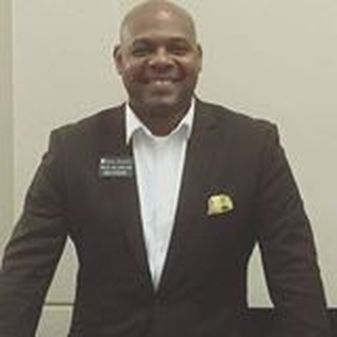 @trich1906
@trich1906
Forest Of The Rain Productions: How can colleges and universities ensure they are producing relevant research that is timely, accurate, sound in theory and has solid practical applications that can be used to solve problems confronting societies?
Dr. Telvis M. Rich: With a growing number of research and teaching institutions seeking to promote social, environmental, and economic justice, it is paramount to engage faculty and administrators in research that is applicable to a diverse population. For example, there are opportunities for institutions to promote student and faculty collaboration on relevant topics that engage race, gender, sexuality, workplace job satisfaction, and status through on-campus poster presentations and regional conferences where limited financial obligations are required.
Impactful research must serve the local and regional communities while providing a safe space for scholars and emerging scholars to employ theories and conceptual frameworks that support quantitative and qualitative findings. To this end, collaboration among different units in the institution is a great means to commence critical studies that produce quality
outcomes for diverse populations.
Dr. Telvis M. Rich: With a growing number of research and teaching institutions seeking to promote social, environmental, and economic justice, it is paramount to engage faculty and administrators in research that is applicable to a diverse population. For example, there are opportunities for institutions to promote student and faculty collaboration on relevant topics that engage race, gender, sexuality, workplace job satisfaction, and status through on-campus poster presentations and regional conferences where limited financial obligations are required.
Impactful research must serve the local and regional communities while providing a safe space for scholars and emerging scholars to employ theories and conceptual frameworks that support quantitative and qualitative findings. To this end, collaboration among different units in the institution is a great means to commence critical studies that produce quality
outcomes for diverse populations.
